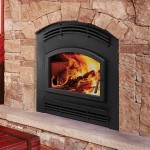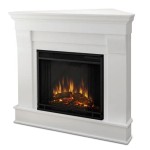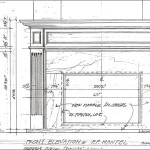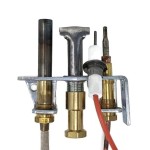Fire And Ice Fireplace Installation: A Comprehensive Guide
The allure of a fireplace has captivated homeowners for centuries, offering not only warmth and comfort but also a focal point for gathering and relaxation. In recent years, the aesthetic possibilities of fireplaces have expanded considerably, resulting in innovative designs like the "Fire and Ice" fireplace. This distinctive style creates a captivating visual effect by juxtaposing the traditional warmth of flames with the cool, shimmering appearance of crushed glass, crystal, or other reflective materials.
Installing a Fire and Ice fireplace is a complex undertaking requiring careful planning, adherence to safety regulations, and a thorough understanding of the fireplace's components and functionality. This article provides a comprehensive guide to Fire and Ice fireplace installations, covering essential considerations, step-by-step instructions, and crucial safety precautions.
Before embarking on the installation process, it's imperative to understand the underlying principles of fireplace operation, relevant building codes, and the specific requirements of the chosen Fire and Ice model. This knowledge forms the foundation for a successful and safe installation.
Selecting the appropriate type of fireplace – whether it's wood-burning, gas, or electric – is the crucial initial step. Each type presents unique installation requirements and considerations. Wood-burning fireplaces necessitate a functional chimney and adherence to stringent building codes regarding clearances and venting. Gas fireplaces require gas line connections and proper ventilation, typically involving a direct vent system. Electric fireplaces offer the simplest installation, often requiring only a dedicated electrical circuit.
The "Fire and Ice" aesthetic is often achieved through the use of tempered glass, crushed glass, fire glass, or decorative crystals placed within the fireplace's firebox. These materials are specifically designed to withstand high temperatures and reflect the flames, creating the visually striking effect. It's critical to use only materials specifically rated for fireplace use to prevent damage or hazardous conditions.
Proper ventilation is paramount for both safety and optimal performance, especially for wood-burning and gas fireplaces. Insufficient ventilation can lead to carbon monoxide buildup, posing a serious health risk. Building codes typically dictate specific chimney height requirements and flue liner specifications to ensure adequate draft. Gas fireplaces usually require either a direct vent or a B-vent system, depending on the model and installation parameters. Electric fireplaces don't produce emissions and don't require ventilation.
Key Point 1: Pre-Installation Planning and Preparation
Effective pre-installation planning is the cornerstone of a successful Fire and Ice fireplace project. This phase involves assessment, selection, and meticulous preparation.
First, evaluate the existing structure and determine its suitability for the chosen fireplace type. This includes assessing the structural integrity of the floor, walls, and ceiling, as well as identifying any potential obstructions or pre-existing utilities that might need to be relocated. For wood-burning or gas fireplaces, a structural engineer or qualified inspector may be necessary to verify the load-bearing capacity of the existing structure and ensure compliance with building codes.
Second, select the appropriate fireplace model based on aesthetic preferences, heating requirements, and installation constraints. Consider factors such as the fireplace's dimensions, heat output (BTUs), and venting requirements. For Fire and Ice fireplaces, pay particular attention to the type and quantity of reflective materials required to achieve the desired visual effect. Consult with a fireplace retailer or manufacturer's representative to obtain detailed specifications and installation instructions.
Third, gather all necessary tools and materials before commencing the installation. This includes safety equipment such as gloves, eye protection, and a dust mask, as well as tools for cutting, drilling, measuring, and fastening. Ensure that all materials are of high quality and meet or exceed relevant safety standards. Obtain any necessary permits from local building authorities before beginning construction. Failure to obtain required permits can result in fines and delays.
Finally, prepare the installation site by removing any existing flooring, wall coverings, or other obstructions. Protect surrounding surfaces with drop cloths or plastic sheeting to prevent damage from dust, debris, or spills. Clearly mark the location of the fireplace and any associated venting or gas lines. Verify that all utilities have been properly disconnected before commencing any demolition or construction work.
The comprehensive pre-installation phase lays the groundwork for a smooth and efficient installation process, minimizing potential complications and ensuring adherence to safety regulations.
Key Point 2: Step-by-Step Installation Process
The installation process for a Fire and Ice fireplace varies depending on the type of fireplace (wood-burning, gas, or electric) and the specific model. The following steps provide a general overview of the installation process, but it's crucial to consult the manufacturer's instructions for detailed, model-specific guidance.
For wood-burning fireplaces, begin by constructing the firebox and chimney. The firebox should be built according to local building codes, using fire-resistant materials such as firebrick or refractory cement. The chimney must extend above the roofline and be capped to prevent rainwater from entering. Ensure that the chimney flue is properly sized to accommodate the fireplace's heat output. Installing a chimney liner is often required to prevent creosote buildup and improve draft.
For gas fireplaces, install the gas line according to local plumbing codes. A qualified gas fitter should handle the gas line connection to ensure safety and proper operation. Install the fireplace according to the manufacturer's instructions, paying particular attention to venting requirements. Direct vent fireplaces require a sealed vent system that draws air from outside and exhausts combustion gases directly outdoors. B-vent fireplaces use a conventional chimney to exhaust combustion gases. Ensure that the venting system is properly sized and installed to prevent carbon monoxide buildup.
For electric fireplaces, the installation process is typically simpler. Ensure a dedicated electrical circuit is available to power the fireplace. Mount the fireplace according to the manufacturer's instructions, taking care to conceal any wiring. Some electric fireplaces can be recessed into the wall, while others are designed to be surface-mounted. Select a location that is away from flammable materials and that provides adequate clearance.
Once the fireplace is installed, install the reflective materials (tempered glass, crushed glass, fire glass, or decorative crystals) according to the manufacturer's instructions. Ensure that the materials are evenly distributed across the firebox floor and that they do not obstruct the burner or grate. Adjust the flame height or heat output as needed to achieve the desired visual effect and heating performance.
After the fireplace is installed, conduct a thorough inspection to ensure that all connections are secure, all vents are properly sealed, and all components are functioning correctly. Perform a test burn to verify that the fireplace operates safely and efficiently. Monitor the fireplace for any signs of smoke, leaks, or other problems. If any issues are detected, immediately shut down the fireplace and contact a qualified technician for assistance.
Key Point 3: Crucial Safety Precautions
Safety is paramount during and after Fire and Ice fireplace installation. Adherence to safety precautions minimizes the risk of fire, carbon monoxide poisoning, and other hazards.
First, always wear appropriate safety gear, including gloves, eye protection, and a dust mask, when handling tools, materials, or hazardous substances. Protect your hands from burns and cuts, your eyes from flying debris, and your lungs from dust and fumes. If working with gas, ensure the area is well-ventilated to prevent the accumulation of flammable gases.
Second, follow all manufacturer's instructions and local building codes. These guidelines provide specific information on installation procedures, venting requirements, and safety precautions. Failure to adhere to these guidelines can result in unsafe conditions and void the warranty.
Third, maintain proper clearances around the fireplace. Keep combustible materials, such as furniture, curtains, and drapes, away from the fireplace to prevent fire hazards. Consult the manufacturer's instructions or local building codes for specific clearance requirements.
Fourth, install carbon monoxide detectors in your home, especially near bedrooms and living areas. Carbon monoxide is a colorless, odorless, and deadly gas that can be produced by improperly vented fireplaces. Test the detectors regularly and replace the batteries as needed.
Fifth, schedule regular inspections and maintenance for your fireplace. A qualified technician can inspect the fireplace for cracks, leaks, and other problems and perform necessary repairs. Clean the chimney regularly to remove creosote buildup, which can cause chimney fires. Following the manufacturer's recommendations to ensure that the fireplace operates safely and efficiently. Regular inspection and maintenance contributes to fire and ice fireplace safety and longevity.
Sixth, only use materials specified for fireplace use within the fireplace. Using non-rated materials can be hazardous and can cause damage or personal injury.
By diligently following these safety precautions, homeowners can enjoy the beauty and warmth of a Fire and Ice fireplace while minimizing the risk of accidents and ensuring a safe home environment. A well-installed and properly maintained fireplace provides years of enjoyment. Remember that a safe installation requires both technical expertise and a commitment to safety protocols. When in doubt, consult with a qualified professional to ensure code compliance and safe operation.

Fire And Ice Fireplace I Totally Want To Do This In My Family Room Glass

Fire And Ice Fireplace Makeovers 12 Photos La Quinta Services Phone Number Yelp

Gallery Of Fireplace Conversion To Fire Glass And Ice

Fire On Ice Installation

Fire And Ice Aquatic Glass Fireplace Spa Relaxation Room

Fire And Ice Fireplace Makeovers 12 Photos La Quinta Services Phone Number Yelp

Gallery Of Fireplace Conversion To Fire Glass And Ice

Make Your Fireplace A Diamond

Northwest 42 Electric Fireplace Wall Mounted Led Fire And Ice Flame With Remote Target

Northwest Electric Fireplace Wall Mounted Led Fire And Ice Flame 54 Inch Com








